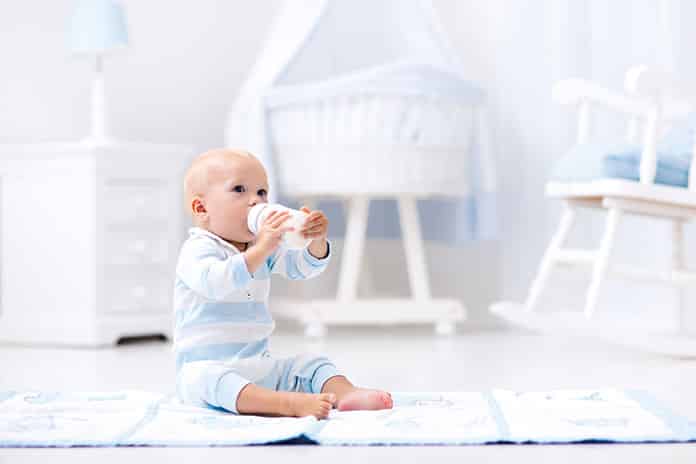Parenting professionals and leading mumpreneurs answer some of your most pressing questions

Jodie Forster-Molstad
Specialist Women’s Health Physio at Six Physio gives advice on addressing diastasis rectus, or abdominal separation, also known as “Mummy Tummy” after baby.
Help! I just had a baby, but now I want my belly back. What do I do?
This is a common complaint. A natural consequence of pregnancy is that the abdominal muscles and connective tissues stretch to make room for your growing baby. In about 30% of pregnant women, a diastasis rectus occurs. This is when the abdominal muscles and the linea alba, a connective tissue, which connects the right and left abdominal muscles, becomes overly stretched. This results in the abdominal muscles moving away from the midline, leaving a gap of varying widths. It can be a distressing consequence of childbirth and might contribute to back pain, pelvic pain, or urinary incontinence. In most women, the separation heals on its own. The first eight weeks postpartum are a critical time for healing, so make sure you:
• Practice good postural habits
• Do pelvic floor (Kegal) exercises
• Avoid lifting anything heavier than your baby
• Avoid traditional sit-ups
• Try temporary supports, known as binders or braces
• After your six-week check with, start working on core strength with a specialised personal trainer or post-natal Pilates or yoga class
At eight weeks postpartum, if you still notice a bulging, separation or a soft gap between the abdominals it’s unlikely to change without a core muscle training programme. As part of a full Postnatal Body Check, a Women’s Health Physio can go through specific exercises best for you to start with and provide a safe progression.

Nicole Hastie
Nicole Hastie is a Carrying Consultant and Director of Kangaroo Care UK. She is passionate about helping parents learn the benefits of skin-to-skin contact with their babies.
Why is skin-to-skin contact so important for my baby?
Newborn babies need an intense amount of care in their early days. They rely on their parents for food, warmth, security and wellbeing. These essential needs can be met in a way that is both rewarding and relaxing for parent and baby through skin-to-skin contact. Using a wrap or kangaroo care top can make it easier to stay warm and secure during skin-to-skin contact.
When you hold your baby on your chest their whole nervous system responds with an increase in oxytocin. Your own body (mum’s and dad’s) will also release oxytocin, and for breastfeeding mums this increases levels of prolactin, which helps establish your breast milk supply. Oxytocin is known as the “love” hormone. It ensures a sense of wellbeing, deepens feelings of attachment and lowers stress levels in both parent and baby.
Skin-to-skin contact helps your baby regulate their breathing and keep warm. This can enhance growth, as they are not having to use as many calories to maintain body temperature and respiration rates. It also promotes deep sleep, which is essential for early cognitive development. These benefits are known to have a long-lasting impact.
Lianne Bertelli
The Communications Manager for Dr Brown’s Anti-Colic Baby Bottles explains two major problems associated with most traditional baby bottles – air and vacuum.
What is the difference between a vented and traditional non-vented baby bottle? I get very confused!
Traditional or restricted vented bottles tend to develop vacuums because babies have to suck progressively harder on the one hole in the bottle to obtain the liquid. This causes teat collapse and baby has to stop feeding. Air enters the bottle when the teat reinflates and this is subsequently ingested and this can result in colicky symptoms.
Seventy-eight per cent of healthcare professionals agree that the most common causes of colic in young babies are through digestive or feeding problems, including swallowing air.
The unique Dr Brown’s internal vent eliminates the vacuum and air bubbles in the feed, thus helping to reduce colic and burping, which has been clinically proven to help reduce windy colic, and is the number one choice of UK health professionals for the relief of colicky symptoms.

Fiona-Jane Kenworthy
Fiona-Jane is Marketing Manager at Dreamgenii and she feels it’s important that pregnant women are made aware of the “Sleep On Side” campaign.
What exactly is the Sleep On Side campaign, and is it true that sleeping on your back in late pregnancy can potentially be dangerous for my baby?
The Midlands and North of England Stillbirth Study (MiNESS) found that if pregnant women sleep on their side during the third trimester, a 3.7 per cent decrease in stillbirth could be achieved, saving around 130 babies’ lives a year.
Sadly, around one in 225 pregnancies in the UK end in a stillbirth and leading charity Tommy’s have launched the Sleep On Side campaign to educate women about the risk of going to sleep on their backs in late pregnancy. One theory suggests that lying on your back puts all the weight of the baby and uterus on the main blood vessels that supply the baby, which can restrict blood flow and oxygen to the baby.
Sleeping on your side during late pregnancy can be difficult unless this is your general preferred position. But the multi-award-winning dreamgenii Pregnancy Support and Feeding Pillow is the only patented pregnancy pillow shaped to promote the health of you and your baby and can help mums-to-be sleep easily on their side.
The product not only helps to aid a restful sleep, it supports your bump, back and knees. Most importantly, it helps you to lie on your left side.
Using the pillow will help you achieve the best position for you and your baby, and prevent you rolling onto your back during sleep.
Once baby arrives safely, the dreamgenii can then be used as a comfortable feeding support pillow.
Heather Morris
Heather Morris is a Registered General Nurse and state-certified Midwife. She is also mum to Freddy, Harry and Jack.
What’s the best way to treat nappy rash?
No matter how careful you are, most babies are likely to get nappy rash at some time. Nappy rash is usually mild and can be managed with a good skincare routine and a barrier ointment. Taking care of your baby’s delicate skin is essential in treating it.
These simple steps will help:
• Lie your baby on a towel and leave your baby’s nappy off as often as you can, to let fresh air get to the skin.
• Change wet or soiled nappies as soon as possible.
• Clean the nappy area thoroughly using plain water or alcohol and fragrance-free wipes.
• Don’t use talcum powder, as it contains ingredients that could irritate your baby’s skin.
• Try to bath your baby every day, but don’t use soap or bubble bath.
• Gently pat rather than rub your baby’s bottom dry and avoid vigorous rubbing.
• Use a suitable barrier ointment at each nappy change.
Most mild cases of nappy rash can be easily treated with an ointment recommended by your pharmacist. However, whenever you feel worried always seek the advice of a healthcare professional.

Lucy Coe
Lucy Coe, Lead Midwife for the Midwifery Led Team at The Kensington Wing, talks bathroom visits during labour.
What happens if I need to go to the loo during labour?
Firstly, this is a really common question – please do not worry! When you are in labour, it is normal to feel lots of pressure down below when you have a contraction, and sometimes you can mistake this for actually needing the loo. But your midwife will be there to support you and help you to the bathroom if you really need to go. When it’s time to push your baby out, you actually use the same muscles as you would to pass a stool, so the sensation of this is very normal and nothing to worry about.
Our bodies are very clever and usually we don’t need to open our bowels for a day or so after the birth, which can give us a little time to heal. Sometimes you need an episiotomy. This is a small cut to your perineum performed by your midwife to expedite the birth of your baby. Episiotomies are not routinely performed, but stitching afterwards heals similarly to when you tear naturally, so you should still be able to go to the bathroom without any problems.
It is also very important to think about your bladder in labour, as it’s best to keep it as empty as possible. Your midwife will remind you to try and go regularly, and within a few hours after the birth of your baby.
Theodora Little
Theodora Little, Dental Therapist Hygienist and Prevention 1 consultant at Curaden AG, Switzerland discusses proper oral care.
How can I be sure that my child is receiving proper oral care?
Improper oral care from inadequate dummies, teething products and brushing during infancy can lead to serious dental problems, such as tooth decay, overbite and misplaced teeth.
Long-term use of such things as dummies can prevent the correct alignment and occlusion of teeth; as the child is still developing, anything held in their mouth for long periods of time can influence the developing jaw to grow around the foreign object. This can then result in a narrow palate and the upper front teeth tipping forward, resulting in what we call an “overbite”. It could also result in an “open bite”, where the teeth do not meet in occlusion, which can contribute to speech difficulties, such as a lisp, that may last until adulthood. Curaprox’s Baby Soother ensures no displacements or damage result from its use under ordinary conditions, due to the fact that it leaves enough room for tongue and palate to develop normally.
Oral care becomes important as soon as your child begins eating – you need to clean their gums with a wet washcloth. If you don’t do this, you can increase the chances of damage to the child’s gums in later life. Oral care is also extremely important as soon as teething begins; even if it’s just one tooth coming through, you must
begin brushing the baby’s teeth at least twice a day.
Make sure you attend regular dental appointments with your child, clean your baby’s mouth even before teeth erupt, avoid bulbous dummies, sugary foods and drinks, and always try to make brushing fun!

Workout Goals
Mama talks to maternity fitness experts FittaMamma about staying active during pregnancy
Tell us more about FittaMamma.
FittaMamma is best known for our unique range of stylish, supportive maternity and postnatal fitnesswear. But fittamamma.com is not just an easy way to shop online for maternity gym kit. We provide a “one-stop” resource for health and wellbeing in pregnancy, with expert information around prenatal exercise and yoga, including workouts, videos, pregnancy-friendly recipes and nutritional guidance as well.
Is it really okay to carry on exercising when you’re pregnant?
Experts (including the Royal College of Obstetricians and Gynaecologists) recommend ALL healthy pregnant women should aim for 30 minutes of daily exercise to benefit both mother and baby. If you regularly attend exercise classes, work out in the gym or love running there’s no reason not to continue. If you don’t already exercise, now is a good time to embrace a healthier lifestyle. You’ll feel less tired, less prone to niggles and discomforts such a backache, swollen ankles and varicose veins, and you’ll be glad of your improved strength and stamina during labour. Women who exercise generally maintain a healthier weight gain and recover more quickly after the birth. And their babies are less chubby, develop faster and are more likely to exercise.
What are your top tips?
Remember the “Talk Test”– if you’re exercising so hard you can’t continue a conversation, ease up and slow down. Warm-up and cool-down, scale back as your pregnancy progresses and keep your bump, back and boobs supported with properly designed maternity fitnesswear. There are comprehensive guidelines on fittamamma.com for safe pregnancy exercise, along with trimester-specific workouts and videos to help you get started. Stylish FittaMamma gymwear will improve your confidence as well as your comfort – looking good when you workout is a great motivator!






NO COMMENT